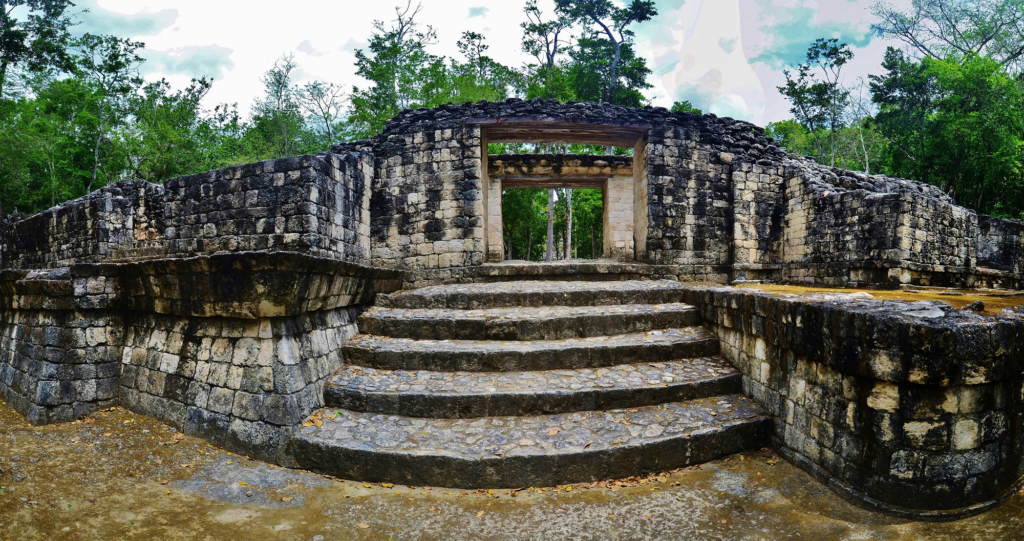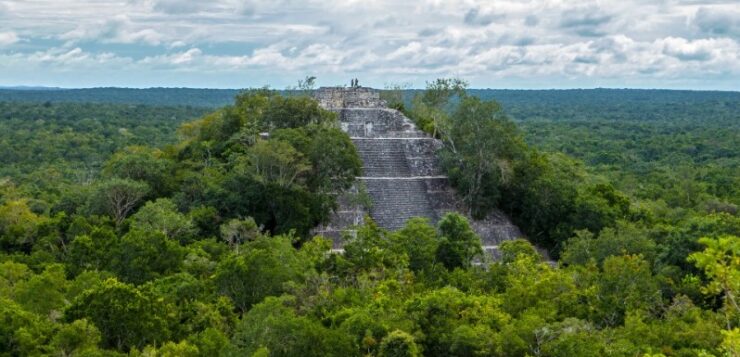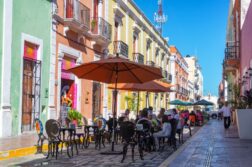The Mayan civilization, one of the most important cultural heritages of Mesoamerica.
The archaeological remains show the greatness of this pre-Hispanic culture and, thanks to the steles and Mayan literature, we can learn what life was like for this civilization: from commercial activities, rituals and their religion to military victories and social organization. The amazing Mayan empire has a legacy that spans more than three millennia in five Mexican states and Central American countries.
Campeche stands out for having beautiful and imposing archaeological sites with impressive technological advances that, when combined with nature, bring out the splendor of the ancient Mesoamerican inhabitants.
Calakmul, a Mayan empire located in the heart of the jungle

Calakmul (which means two mounds together) is a Mayan power of great influence and relevance. It is considered a World Cultural Heritage Site and is strategically located within the biosphere reserve of the same name.
If you look up, you can see monkeys strolling through the branches of the trees, hear the cheerful song of birds, the stealthy gait of the balam (jaguar) after its prey, the solitary lying puma or the carefree trot of the white-tailed deer. These are just some of the animals you can see among an impressive flora with more than 1,600 varieties of species.
Calakmul was a prosperous power that had great relevance in the south of the state of Campeche and in other Mayan territories. A ritual that shows respect for the rulers is that, upon dying, masks of jade and obsidian, mainly, were made for them, as well as other precious objects that were included in the offerings on their tombs.
From the city of Campeche, take Highway No. 261, heading south, until you reach the city of Escárcega, then take Highway No. 186. And at kilometer 95, passing the Conhuás ejido, take the detour to the south on a paved road and after 60 kilometers you will reach the site.
Edzná, the metropolis with great hydraulic advances

The splendor of the Mayan culture is present in this regional capital of imposing beauty. Being here is to be amazed while you admire the charm of each perfectly constructed building, since the Mayans, being astronomers and mathematicians, had the purpose of creating visual games in which the sunlight projects a shadow on the architecture, so the spring equinox is a spectacle of extraordinary magnificence.
This Mayan city was the regional capital of the west of the peninsula for approximately half a millennium, so this impressive site shows the economic, social and political power of the Mayan civilization. It is located in a valley that could easily flood, so its ancient inhabitants developed efficient hydraulic technology that consisted of a network of canals that served as transportation, irrigation for farmers, to carry water to a lagoon and, in addition, they built a dam!
The buildings are decorated with mythical animals, beautiful symbols and divine representations that show the great skill to build and create unmatched architecture.
It is located 55 km southeast of the city of Campeche. It can be reached by federal highways 180 and 261, from Champotón via Haltunchén and Hool, and continuing east or from Campeche passing through Chiná, Pocyaxum, Nohacal and Tixmucuy.
Becán, a war city

From the top of a pyramid you can see other buildings that are surrounded by a moat, the tall green trees and some birds flying while the sun illuminates the landscape.
Becán (a path or cavity left by the flow of water) is the capital of the Río Bec region. The importance of this archaeological site is that around the metropolis there is a moat, unique in Mayan culture and that has seven entrances, made so that farmers could enter and leave the city, also designed to protect the city from others, so there was important military activity.
Outside there are smaller buildings where farmers settled, sanctuaries, granaries and other workers who supported the Mayan monarchy, which is why some researchers believe that the moat separated the social classes with the noble class living in the majestic internal buildings.
Becán is north of federal highway no. 186, approximately 300 km from Campeche. It can be reached from Escárcega (150 km) or from Chetumal (130 km).
Balamkú, the city that protects the frieze of the universe

Balamkú (temple of the jaguar) is an admirable Mayan city built in the jungle where the flight of the eagle has its counterpart: the nocturnal and powerful jaguar. The great diversity of frogs (which was the symbol of happiness), the free fluttering of butterflies and the cautious walk of the snake are a fundamental part of this glorious enclosure.
Here the frieze of the universe is kept, an archaeological piece made of modeled and painted stucco that represents the order of the universe through jaguars and snakes with four scenes (each one personifies a ruler) in which opposite aspects of the underworld are illustrated, where the monarchic cycle is similar to the solar cycle.
This impressive archaeological zone is divided into three parts: North, Central and South, of which only two have been studied. In the southern area there is a colossal pyramid that measures 10m in height, the central area has two plazas and in the northern area there is the palace Casa de los Cuatros Reyes, since here archaeologists found the frieze of the universe.
Access is via a 3km paved road, located northeast of the Conhuás ejido at kilometer 93 of the Escárcega-Chetumal Federal Highway (Highway No. 186).
Start planning your next adventure to these unique archaeological sites. Campeche is undoubtedly an important part of the culture, history, natural diversity and archaeology of Mexico. Enjoy everything this destination has to offer and discover more about the Mayan culture!




